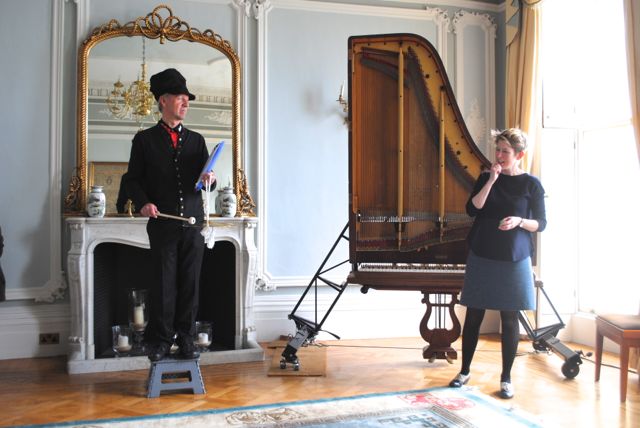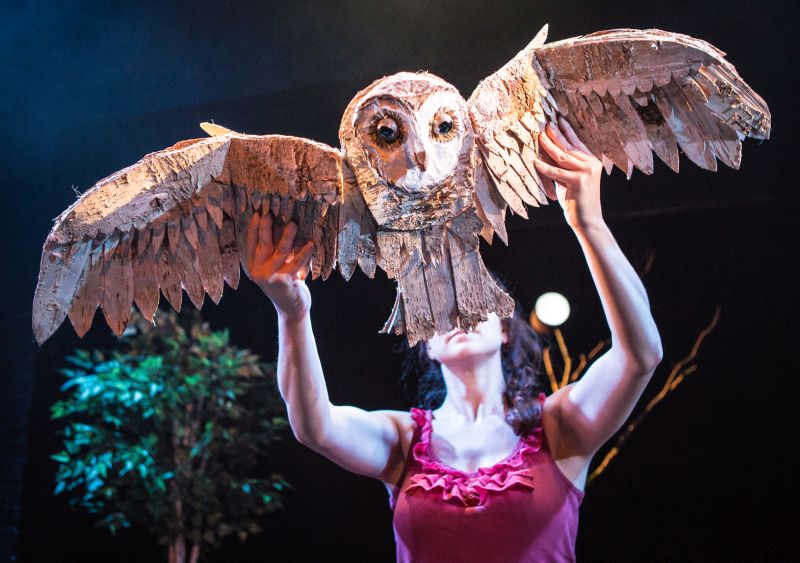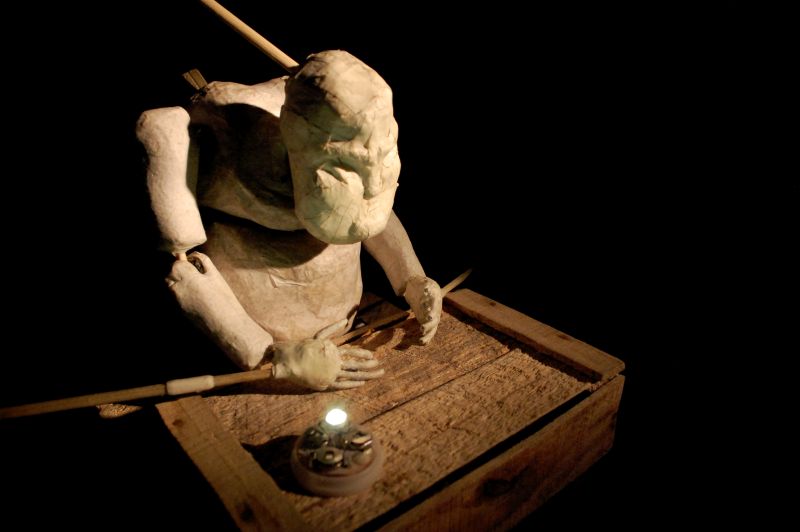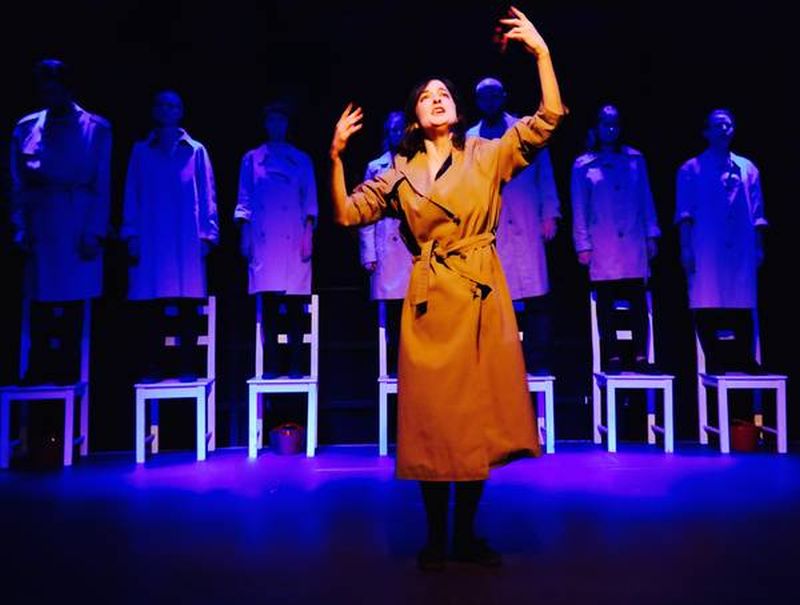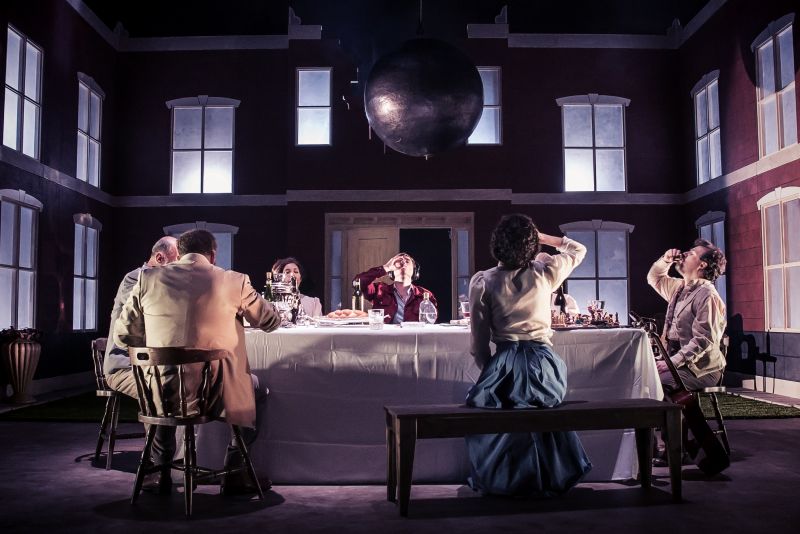The view through the window is stripes: pavement, road, pavement, road, pavement, beach, sea. It’s a stratified, multi-directional landscape that is flat and vertical, close and distant that both flattens and extends space.
We are encouraged by our Salon host, Anton Lemski (aka Richard Layzell) to spend time during our visit considering the space between things, the views and the architecture as well as the performance and installation on show. ‘Question your teaspoons,’ he declares, quoting Georges Perec, having first arranged us in height order for an introductory welcome. We are to feel at home here, enjoy the house, take our time, not worry about the appointments on our engagement-cards, we’ll be fine.
Curated by Home Live Art, the Salon finds perfect accommodation in Angel House, a distinguished Regency townhouse in Hove, newly restored to opulent glory. What seems like a rather large group for this adventure distributes itself easily through the rooms to make discoveries, watch set pieces, talk and wonder.
A group of thirty gather in the Morning Room for Seth Kriebel’s The Memory of Bricks. It’s a distillation of the interactive journey pieces he has been making in recent years, a key one being A House Repeated, for Battersea Arts Centre’s post-fire. This new version conjures hidden secrets and fantasy rooms in the mind, as participants choose an imaginary path through Angel House. Seth and co-host Zoe Bouras show considerable skill and patience in gently guiding our journey, the audience here is more risk-averse than the young things of Clapham. It is cleverly constructed work, delivered calmly and enabling everyone to take part without pressure. Seth and Zoe take time out to describe to each other fantastical rooms in poetic prose, and end by taking the lead themselves, hot-seating almost, to bring the story to a pleasing close. Perhaps the Morning Room worked against us journeying together as a group, as Seth had encouraged us to do; we might have had even more adventures.
We find togetherness in the Best Bedroom, where the Boy Stitchers are holding court. There are embroidered cartoonish panels dotted about, the shredded remains of 19th century Colorado farmers’ shirts (Wranglers as it happens) hanging limply in a wardrobe, a guide to knitting stitches on the wall and a green jumper whose moth-holes are being repaired in blue wool. We can sew if we want to; there are tempting silk threads on the low table. Trevor Pitt, resplendent in Fair Isle vest made by his mother, convenes a conversation by knitter Tom of Holland, illustrative embroiderer Stewart Easton, who turned to this medium when his drawn line became too perfect, and denim restorer Luke Deverall. These are slow crafts and the chat is quiet and interesting; men with beards and integrity, concerned with history and the process of making, rather than fashion per se. A pair of de-constructed gloves called Anna Karenina sit on a bedside table; Dorian Gray is downstairs, and Lady Chatterley, being man-handled by Mellors, appropriately hewn in rough twine, is on a table in the hall. Literature, yarn and abstract art weave together in Tom of Holland’s knitted series The Reading Gloves. In today’s ‘buy it cheap and throw it away’ culture we should all be encouraged to make and to mend, carefully and slowly.
But there’s an almighty banging in the Laundry Room disrupting our peace. Through a peep-hole, we see a sepia room, a sofa, a man in underwear. He seems to be wearing a gas mask. He is coming towards us, mask off, eating cake, look out! Thump. The door visibly shakes causing the viewer to leap backwards. We know it’s a film and a fiction but still we jump. Me And The Machine’s Europe’s Living Celebration is described as a kinetic sculpture about belonging, safety and paranoia. It certainly evokes the latter, but you can’t help wanting to watch it over again.
As we stroll through the house, we become more relaxed with fellow participants, more able to stop and talk, look out of windows, sip a glass of something, take a chair. If we need anything, there are staff dressed in black with signifying bright red blooms to ask. One such leads us into the Best Bathroom and pushes the button for Jonny Fluffypunk’s musical intro. The poet, storyteller and self-proclaimed armchair revolutionary tells us about growing up in Bucks where his dad had dominion over a train set in the attic, and reads a poem from his collection The Sustainable Nihilists’ Handbook. He is part Ivor Cutler, part Billy Childish but totally himself, with a sharp wit, impressive breadth of knowledge (there’s a photo of Nestor Makhno, commander of an independent anarchist army in Ukraine, on the mantelpiece) and flamboyant delivery. Viewed through the glass chamber of the very elaborate free-standing shower, I can’t quite see if Jonny’s eyes are on us or the ceiling, but he doesn’t seem the type to avoid making contact. As a grand finale he turns on the taps so we can admire the shower’s variety of spurtings.
After this energising interlude, we repair to the calm of the Regency Room, where Sarah Nicolls is playing extracts from her show Body Clock on her swinging grand piano. The composition is reflective, melodic, delicate and twisty as glass balls twang the strings and hidden microphones amplify knocks. She plays us out, but not before Anton gives a final address, mixing a potted history of the building with a reflection on our time in it; ‘Here we are. Nice to stay. More people like you coming later. Not like you. You are the ones.’
His encouragement, to be ourselves and be ‘seekers’ (thanks Ken Campbell), frames the whole experience. This genteel, elegant live art experience, where the curation, presentation, attention to detail and management of people has made the two hours hugely enjoyable, and is a perfect fit for Brighton Festival’s theme of ‘home’ this year.
Photo by Peter Chrisp

